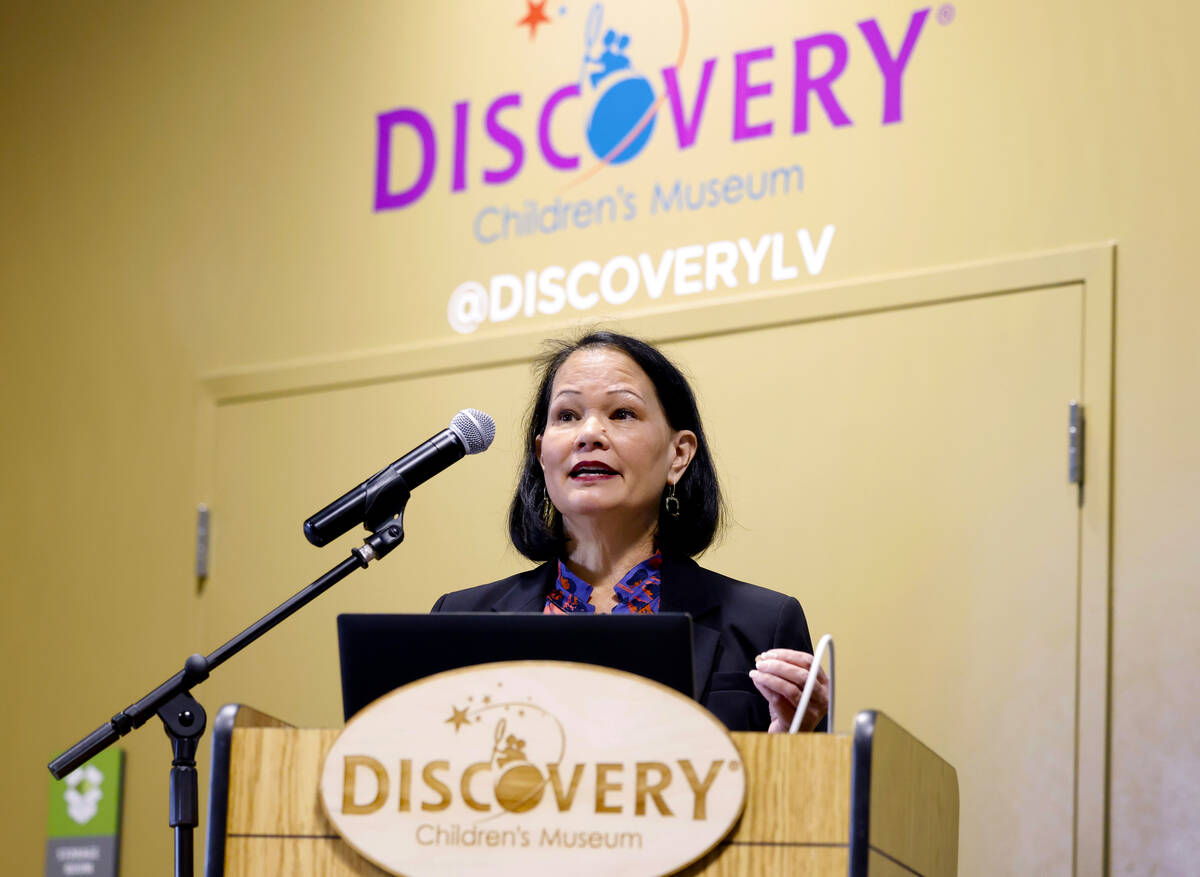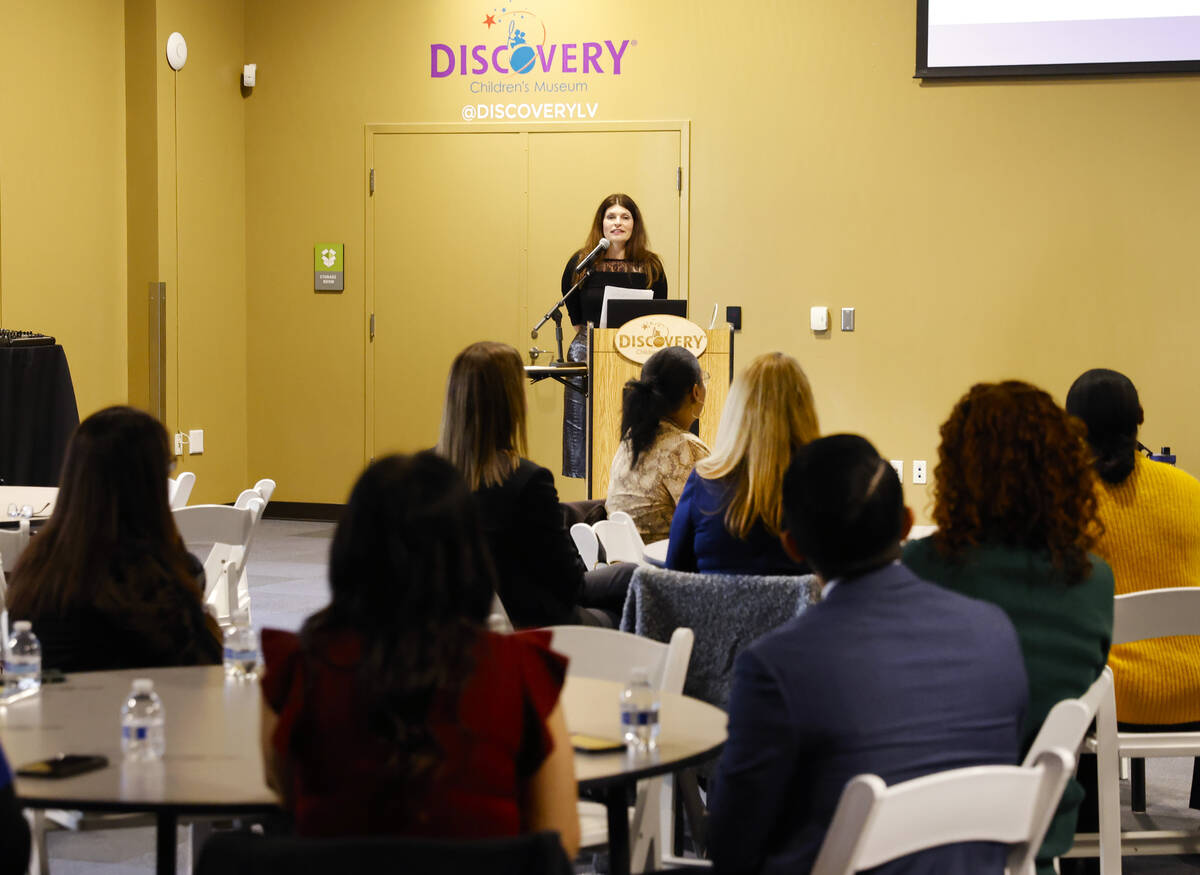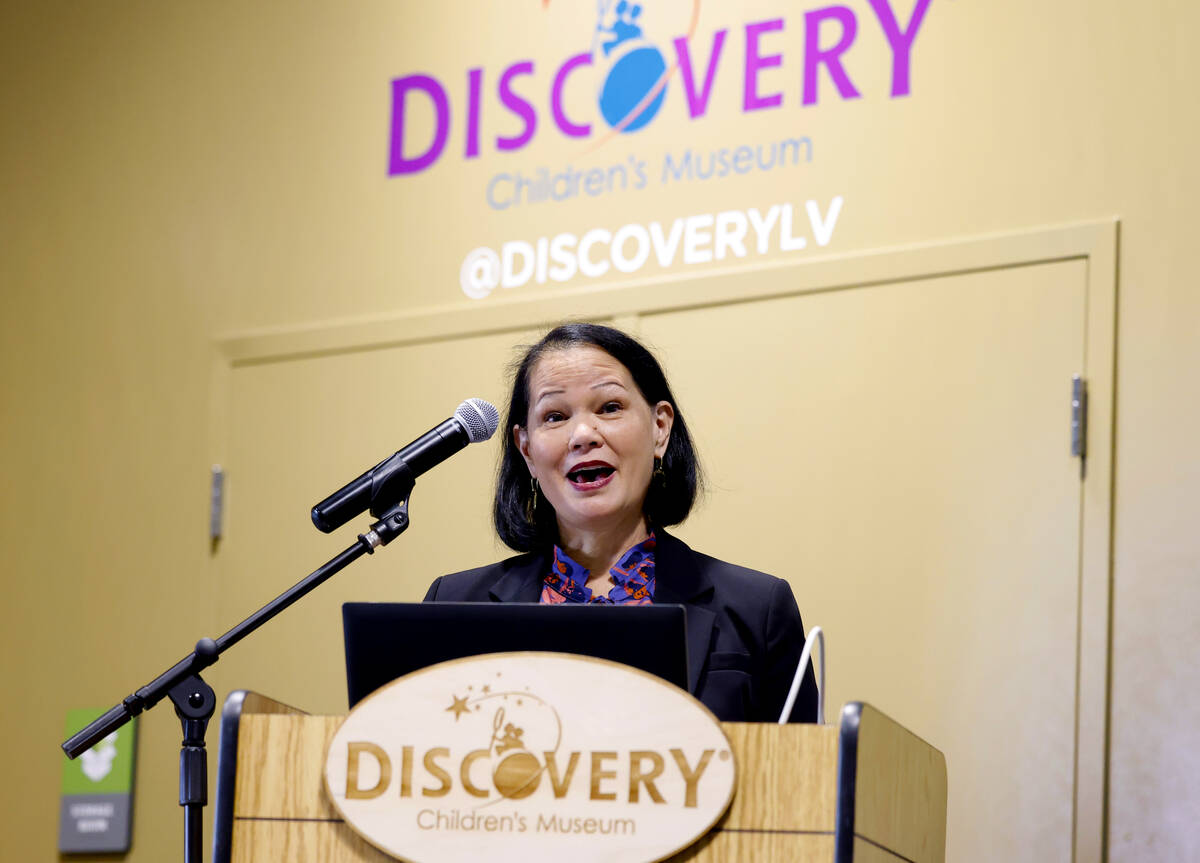Absenteeism remains an issue for CCSD. A new website is designed to help
The Clark County School District and Nevada Department of Education are working with about 15 nonprofit organizations to address student chronic absenteeism.
The newly formed Southern Nevada Family Engagement Center held an event Tuesday at Discovery Children’s Museum to announce a new website, nvfamily.org, that has resources for families.
The Clark County School District, like many others across the country, saw its absenteeism rate worsen during the COVID-19 pandemic. The rate has since improved, but still remains high.
When students aren’t in class, they’re at risk of falling behind academically and not having access to services such as school meals, health care and tutoring.
The Public Education Foundation rallies the community to address the most critical issues in schools, President Kirsten Searer told about 40 people in the audience during Tuesday’s event.
“And as you have heard today, chronic absenteeism is one of the biggest issues facing our schools right now,” she said.
The announcement of the new website is an example of how the community can come together to tackle a problem in education and make a real difference, Searer said.
There are many causes of absenteeism, she said, ranging from students struggling with anxiety to those without reliable transportation.
Students are considered chronically absent when they miss 10 percent or more of their enrolled school days.
The new website includes information about topics such as why attendance matters, attendance rules, ways to get students more excited about attending school, physical and mental health, and supporting families.
During the 2018-19 school year, 21.9 percent of students in the Clark County School District were chronically absent.
That rate nearly doubled during the pandemic, reaching a high of 40.6 percent during the 2021-22 school year.
Searer said “promising trends” were seen last school year in Clark County — with a rate of about 38 percent — but the issue persists.
The district’s rate so far this school year is 23.7 percent, as of Oct. 6, according to a school board presentation earlier this month.
Local organizations have been working together for a year to address the issue. And in September, the school district announced its “Every Day Matters” campaign.
The nonprofits involved include the Public Education Foundation, 100 Black Men of Las Vegas, Boys &Girls Club of Southern Nevada, Boys Town Nevada, CHARISMA Lab at UNLV, Communities In Schools of Nevada, Discovery Children’s Museum, Family Promise of Las Vegas, Green Our Planet, Nevada PEP, Nevada PTA, Spread the Word Nevada, Teach For America, The Children’s Cabinet and Vegas PBS.
‘A significant step forward’
State Superintendent of Public Instruction Jhone Ebert said it’s one of the very few times that so many organizations are coming together around something fundamental — “Our children showing up every day in our classrooms.”
Chronic absenteeism is a statewide issue, and Southern Nevada’s rate is above average, Ebert said.
Last school year, 34.9 percent of students statewide were chronically absent, according to the Nevada Report Card school accountability website.
Ebert said the community coalition is acknowledging the urgency of the issue.
“This is a significant step forward to helping every single child,” she said.
Shana Rafalski, chief of staff for the Clark County School District, said it’s a community-wide effort.
“Since the COVID pandemic, we have absolutely seen a shift in attendance, which is causing problems for our schools and for our students, our families,” she said.
The new website — paired with the district’s “Every Day Matters” campaign — allows for continuing to build a stronger system to reduce chronic absenteeism rates, she said.
Chronic absenteeism is concerning because there’s a direct link between attendance and academic success, Searer said.
Also, many students access services at school and it’s where they develop social skills, she said.
Despite the problem of chronic absenteeism, the majority of students in the school district are in class daily, Searer said. The district’s average daily attendance rate was 90.8 percent last school year.
Chronic absenteeism disproportionately affects students of color and those attending schools in underserved communities, Searer said.
Absenteeism has persisted after the pandemic “and it is affecting our most vulnerable students,” she said.
It’s not just a school issue, but a “complex community concern,” Searer said.
She said the coalition is under no illusion that a new website — which is available in English and Spanish — will fix the complicated, persistent problem.
But she said it’s a resource center for schools and organizations to use when interacting with families struggling with absenteeism.
Contact Julie Wootton-Greener at jgreener@reviewjournal.com. Follow @julieswootton on X.


































